15 common decorating mistakes and how to fix them!
Decorating your home is exciting, but making some common design mistakes along the way is easy. Don’t worry; even the most seasoned interior designers have faced these decorating faux pas.
In this blog post, we will explore some of the most common decorating mistakes and offer practical solutions to fix them.
By avoiding these errors and implementing the right solutions, you can transform your current home into a stylish and functional interior space you’ll love spending time in and showing off. Whether you’re working with small spaces or larger rooms, these tips can make a huge difference in the look and feel of your home.
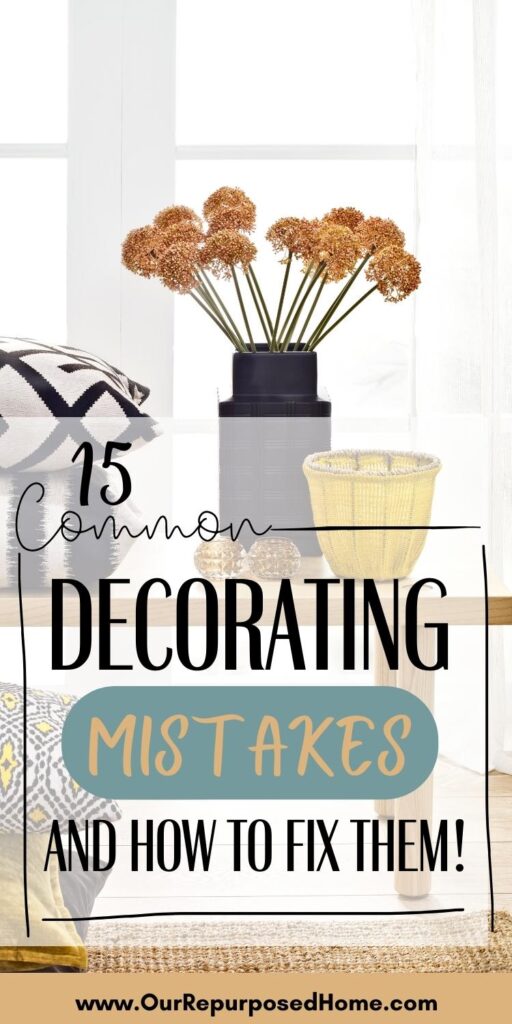
This post may contain affiliate links. If you choose to purchase a recommended product, I may receive a small commission at no additional cost to you. Rest assured that I will not recommend any product that I would not use myself. For our full policies and disclosures click here.
INTERIOR DESIGN MISTAKE #1 – No Defined Focal Point
Without a focal point, a room can feel chaotic and lack a sense of harmony.
Choose a central element that draws the eye’s attention, such as a large piece of artwork, a statement furniture piece, or an eye-catching architectural feature. It’s important to have a focal point in a room to allow your eyes a place to rest. Ideally, you will have only one or two focal points in each room. Arrange other items, such as furniture and your best accessories, around the focal point to draw all attention to it.
Some great places you may use as a focal point in a living room could be a fireplace, artwork or a gallery wall, an entertainment center, a bookcase, or built-ins, or a view out a large window.
Finding a focal point in a bedroom is just as important as it is in any other room of your home. The focal point will set the tone for the room and create a sense of balance and visual interest.
Some potential focal points in this room are the bed, an accent wall, artwork, a window with a view, or even a chandelier.
Creating a focal point in your home office is essential for both functionality and aesthetic appeal. A well-designed focal point can enhance your productivity and make the workspace more inspiring.
Some focal point ideas for your home office could include the desk, bookshelf or built-ins, artwork, or bulletin board.

INTERIOR DESIGN MISTAKE #2 – Not Considering The Function Of The Room
Decorating a room without considering its intended purpose can lead to an impractical and uncomfortable space. This is a big mistake when decorating a room. You can have a great design style and follow all the decorating trends, but without it functioning properly, you will not be comfortable in the room.
Determine the primary function of the room, whether it’s a cozy living area or a functional home office, and let this purpose guide your design choices. Select furniture and decor that aligns with the room’s function to ensure comfort and usability.
Here are some examples:
Creating a Functional Home Office:
If your goal is to set up a home office, start by assessing your work habits and requirements. Do you need storage for files and supplies? Will you be using a computer, and if so, where will it be placed? Will you be meeting clients in this space?
Once you’ve established the practical needs of your home office, you can choose a suitable desk with enough workspace, seating that promotes productivity, and sufficient storage solutions to keep the area organized.
Adequate lighting, both ambient and task, is essential to prevent eye strain during long work hours. Adding the right paint colors for a calming vibe is another easy way to boost your productivity.
By designing your home office with functionality in mind, you create an environment that not only looks good but also supports your work efficiency.
Designing a Cozy Living Area: For a living room, consider how you and your family typically use the space. Is it for lounging, entertaining, or a bit of both? If you enjoy hosting gatherings, ensure there’s plenty of seating and a layout that promotes conversation. A comfortable sofa or sectional, complemented by an accent chair or two, can create a welcoming atmosphere.
If relaxation is the main focus, incorporate soft textures, plush cushions, and warm lighting to encourage relaxation. Throw pillows and layered lighting are great finishing touches that can make your home feel cozy and inviting.
Make sure that the layout allows for natural flow and that furniture placement encourages conversation.
Crafting a Relaxing Bedroom Retreat: In the case of a bedroom, the goal is comfort and relaxation. Think about the elements that contribute to a good night’s sleep – a comfortable mattress, fluffy pillows, and blackout curtains to control light.
Choose a color palette that promotes relaxation and opt for calming decor, such as soft textiles and minimal clutter.
If you like to read before bed, ensure that the lighting is suitable for this activity.
Your bedroom’s layout should also encourage relaxation, so consider the placement of furniture to allow for easy movement and a clear path to the bed.
The key to successful interior design is creating a balance between looks and functionality. While it’s tempting to focus only on how a room looks, never forget that the way a space functions directly impacts your comfort and enjoyment of that room.
By determining the primary purpose of the room and selecting furniture, decor, and a layout that aligns with that purpose, you’ll create a space that not only looks pleasing but also serves you well in your day-to-day activities. Remember, a beautifully designed room is even more beautiful when it’s designed with a purpose in mind. :

INTERIOR DESIGN MISTAKE #3 – Not Considering Architectural Details
Sometimes, we forget to appreciate the charming architectural details that are already in our rooms.
Take a closer look at the special parts of the room that are always there, like the pretty molding, trim, and even the windows and doors that add character. You can’t forget about those charming exposed beams either! These elements add a designer look without much effort.
Try to weave these features into your decorating plans to give your space that extra touch of personality.
For example, when you’re dealing with a slanted wall or a fireplace in a corner, it’s a good idea to place your seating arrangement in a way that flows with that angle.
And let’s not forget about doors and windows. If they’re beautiful or show off a lovely view, let them take center stage. Highlight them with a beautifully mounted drapery rod or curtain rod for added drama.
The best way to handle all of this is to give your room some breathing space. Clear everything out for a moment so you can see those cool architectural bits and pieces that could easily turn into the focal point of your interior space.
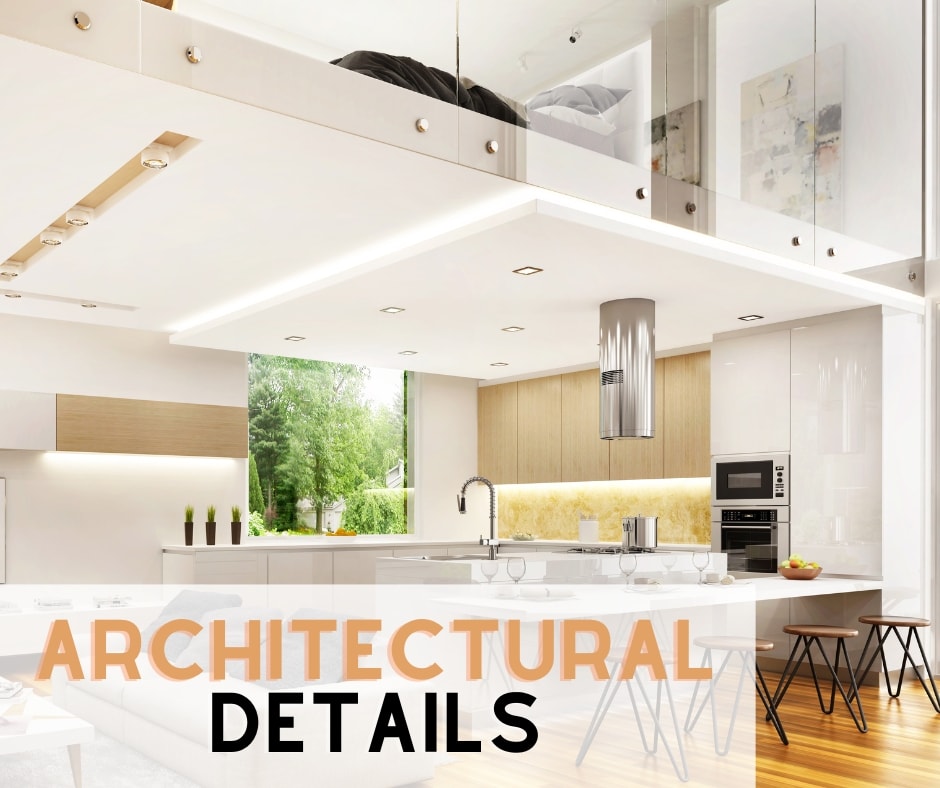
INTERIOR DESIGN MISTAKE #4 – Furniture Against the Walls
If you have a large space, most people will push all furniture against the walls, which creates an uninviting and disconnected room. It is also challenging for people to have comfortable conversations.
The best way to fix this is to pull furniture away from the walls. This will create cozy conversational groupings and bring a natural flow to the room. This cozier arrangement creates a more intimate feel in the room.
Haven’t you ever wondered why sectionals are so popular? It also helps with the function. And if your TV is too far away from your sofa, you may be tempted to purchase a larger TV. See, I just saved you some money! Good thing!
Sometimes, this is not always an option, such as in the case of a small living room. If you’re working with smaller spaces, pulling furniture out may not always be possible, but you can still angle pieces slightly inward to create that cozy vibe.
And anchor these groupings with a rug — just make sure it’s the right size. That brings me to my next mistake…

INTERIOR DESIGN MISTAKE #5 – The area rug is too small for the space
So many people choose area rugs that are too small for the space or use them the wrong way.
Use area rugs to define your furniture grouping. A good rule of thumb is to make sure that all the furniture in the grouping has at least the front legs on the rug. Ideally, the rug should be just a bit larger than the whole grouping (including all of the furniture legs).
There are so many great rug lines available today that offer stylish options in larger sizes to help anchor your room properly.
Please don’t buy a smaller rug that is just big enough for your coffee table! That table will be the only comfortable thing in the room. 😉
In a bedroom, at a minimum, you can use two runners on each side of the bed. The next best would be a rug that goes under the bed that is wide enough to extend out about 2′ on each side and includes the bottom legs up to the front of the bedside tables.
Ideally, you would purchase a rug large enough that the whole bed and side tables would be under it.
The correct wall color and a large rug make such a huge difference in how a smaller room or small home feels overall.

INTERIOR DESIGN MISTAKE #6 – Bad traffic flow in the room
Getting Stuck in Traffic… Inside Your Room! You might not realize it, but how you move around in a room matters too!
Think about how you walk from one place to another in the room. You don’t want to bump into furniture or feel like you’re in a maze, right?
So, set up your furniture in a way that lets you move around without any hiccups. No more blocking doorways or having to walk around something to get from one spot to another.
It’s like creating a pathway that feels just right, letting your entire space feel welcoming, not cramped.
Oh, and don’t forget to give yourself some elbow room! Make sure there’s enough space between furniture, so you don’t feel cramped and things can breathe.
To make sure you’re on the right track, think about making a mood board or a floor plan first. It’s sort of like a treasure map, but for moving items around your room.
Create a simple floor plan before you start moving things around and save some energy. This way, you’ll have a clear idea of how to arrange everything to keep that traffic flowing smoothly before you do the heavy lifting.


You might like this…
Learn how to draw your own floor plan with my post “How to draw a floor plan to scale”
INTERIOR DESIGN MISTAKE #7 – The television is the first thing you see
The TV Takes Center Stage… But Should It? It’s tempting to let the TV steal all the attention, but sometimes it’s not the best star of the show.
I know, I know — we all love some TV time. But there’s more to your home look than just the TV!
You can hang the TV on the wall like a piece of art or place it on a stylish console. But remember, your room is like a puzzle, and the TV is just one piece. Place that TV in a convenient location, but make sure it looks good too.
Decorate around it in a way that minimizes the TV, like on shelves with your favorite books or a collection of plants. Or use a screensaver when you are not watching, so it looks like art over your mantel.
When you make the TV just a part of the fun, the entire space feels more balanced and beautiful.
And hey, if you’re feeling creative, you could even make a mini gallery around your TV with artwork or photos that match your color palette and decor style.

You might like this…
Want to learn some interesting ways to arrange your artwork? Read my posts “Creative Ways to hang artwork” and “Creative Ways to arrange your Mixtiles Photos“
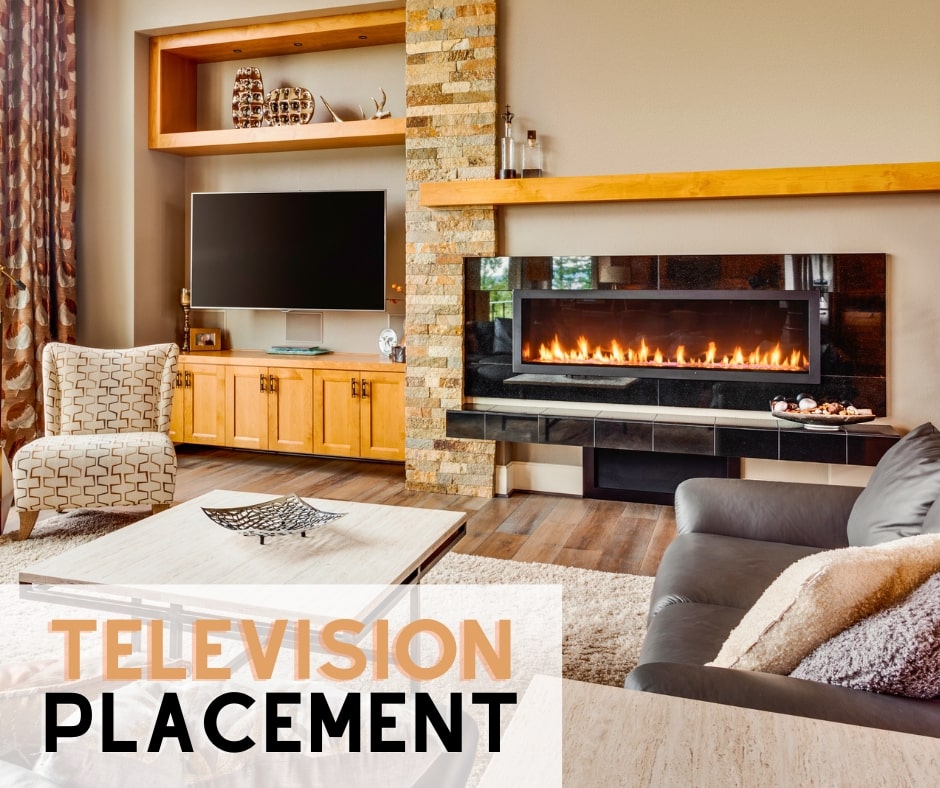
INTERIOR DESIGN MISTAKE #8 – Too much clutter in the room
Less is More: It’s easy to fall into the trap of thinking more furniture and decor mean a better-looking room, but it can have the opposite effect.
Picture your room as a cozy retreat, where you can breathe easily. Too much furniture and too many accessories can make it feel like you’ve invited the whole circus in! So, it’s time for a little decluttering magic.
Start by banishing anything that doesn’t need to be there. Less is often more in this case. Keep the furniture pieces that serve a purpose and make you smile.
If a piece can do double-duty, like a storage ottoman that’s also a comfy seat, it’s like getting two treats in one!

You might like this…
Learn all the ways you can save space in your room with my post “How to make a small room feel bigger“
Remember, your room needs space to show off its personality. Let each piece shine, instead of fighting for attention in a crowded room.
Plus, when you have some breathing room, your space will feel bigger and brighter, and you’ll be able to move around without tripping over things.
Think of it as a little room makeover – clearing out the clutter and making space for the things that truly matter. So, give your room the gift of some well-deserved space, and you’ll see how a little less can make a whole lot of difference.
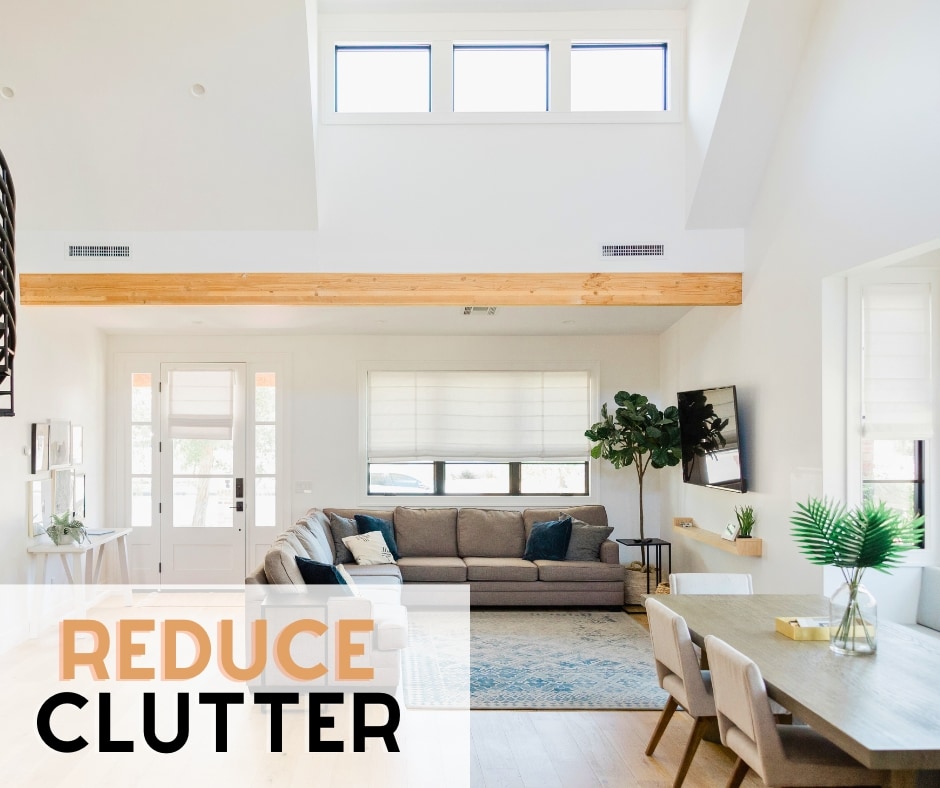
INTERIOR DESIGN MISTAKE #9 – Not using proper lighting
Insufficient or improperly placed light sources can negatively impact the atmosphere of a room and make the space feel drab. Bad lighting can ruin a beautifully designed room.
For the best overall effect in a room, use a combination of general, task, accent, and natural light. What are those, you ask?
Think of general lighting as the friendly sun during the day or the full moon at night. It’s the soft glow that spreads across the room and makes everything feel cozy. You often find these lights in your home in the form of overhead fixtures like recessed lights on the ceiling or maybe even wall sconces.
Now, let’s bring in the task lighting – these are the trusty sidekicks that help you get things done. They can be table lamps or floor lamps by your favorite chair that shine a spotlight on your workspace or book. They give you the light you need where you need it to get things done.
Time for the accent lighting to step in! They’re like those little lights that make a painting look even more magical. Accent lighting will showcase a focal point and give the room interest. Use them to highlight your room’s showstoppers, like a beautiful piece of art or that stunning vase you love.
Finally, a touch of Mother Nature – natural light! If you’re lucky to have windows that let the sunshine in, embrace it. Natural light not only keeps things fresh but also adds that special touch that no light bulb can mimic. Natural light will make a room feel alive.
If you’ve ever wondered why some rooms can handle dark colors and others cannot…It’s natural light!
And the secret ingredient to set the mood – dimmers! Just like adjusting the volume of your favorite song, dimmers let you change the light levels. So whether you’re going for a cozy evening or an energizing morning, dimmers have your back.
By playing around with these different light types, your room becomes a true masterpiece, shining in all the right places and setting the mood for any occasion. Using all four layers of lighting will give your room a beautiful look and make it easy to read, cook, work, etc.
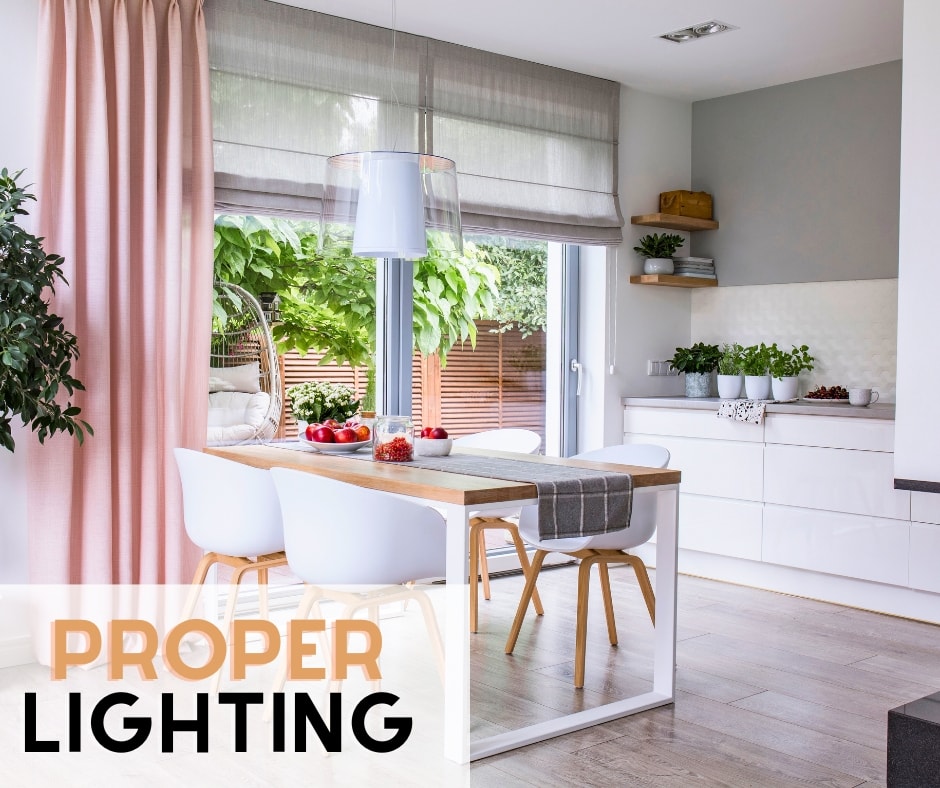
INTERIOR DESIGN MISTAKE #10 – Accessories all the same height
Accessories at the same height can make a room appear flat and lack visual interest.
Mix things up with vases, candles, and decorative objects of different sizes, heights, and levels. This is like giving your room a burst of energy and depth.
Imagine arranging a few tall vases with some short candles and medium-sized decor pieces. By embracing this mix of heights, your decor gets a boost of personality and visual interest. Suddenly, your room isn’t just a flat surface; it’s like a whole world to explore. You’ll notice how your eyes dance around the room, discovering new things at every level.
With different heights in the mix, your room becomes a lively and engaging space.
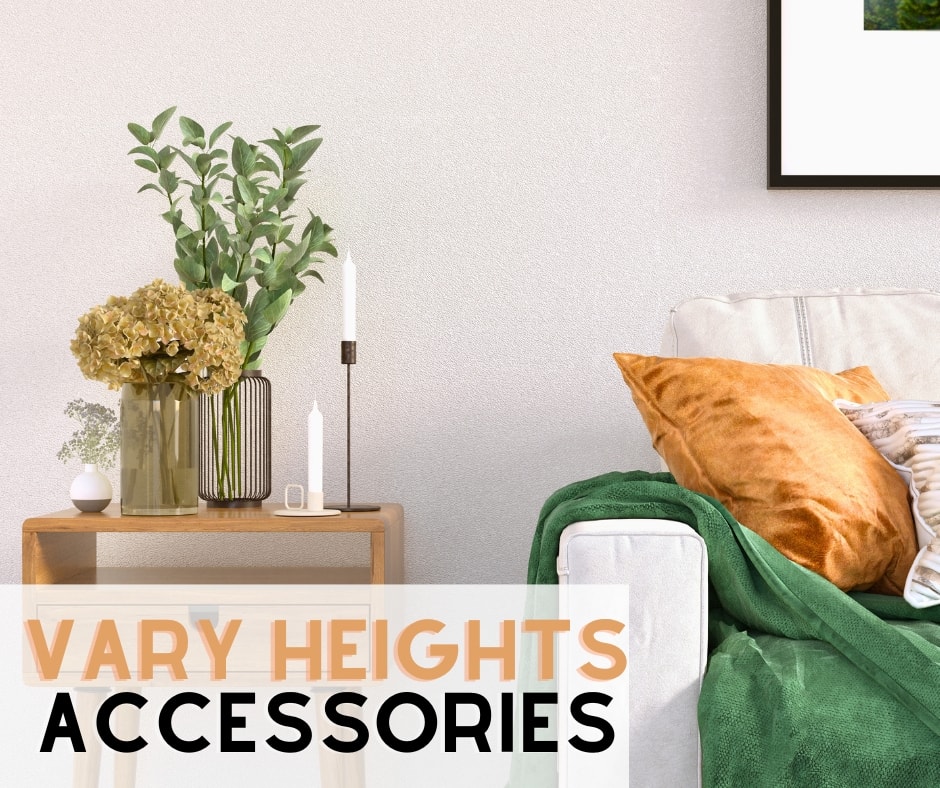
INTERIOR DESIGN MISTAKE #11 – Artwork hung too high or too low
Hanging artwork too high or too low can throw off the balance of a room.
When placing or hanging artwork, it should be hung at eye level. You say, “Whose eye?” It doesn’t matter too much unless you are tall or short. What you need to consider more is how you use the room!
Place the artwork at a height that is appropriate for the use of the room. For example, if it’s a hallway, then your eye level is higher because you are standing while looking at the artwork. If it’s a dining room, then eye level is lower because you are sitting while enjoying it.
You will also use artwork as part of the whole picture. I like to place my artwork after I have placed all my furniture and accessories. Then I can see what space I have available and use it to fill in the blank spaces accordingly.
Never hang your artwork before placing your furniture because it should relate directly to what is around it.

INTERIOR DESIGN MISTAKE #12 – Window treatments hung wrong
Ill-fitted or poorly hung window treatments can detract from the overall aesthetic. It’s like putting on the wrong jewelry for an outfit. It can take away from the whole look.
Time to give your windows the royal treatment they deserve! Just like finding the perfect pair of glasses that fit your face, you need to make sure your curtains or blinds are the right size for your windows.
No more too-short curtains that look like high-water pants! Imagine long, flowy curtains that graze the floor or sleek blinds that kiss the bottom of the window sill.
And don’t forget about the height, as it adds a touch of elegance and polish to your room’s vibe. Try and hang your curtains as close to the ceiling as possible and have the inside edges of the curtains just inside the window molding. This will open up your windows and make them look larger and let in more light. Which is a win-win.
By getting the sizes and heights just right, your windows become a beautiful part of your room’s story. They frame the view outside and add a finished layer to the whole space. So, let your windows shine bright – it’s time for their grand curtain call!
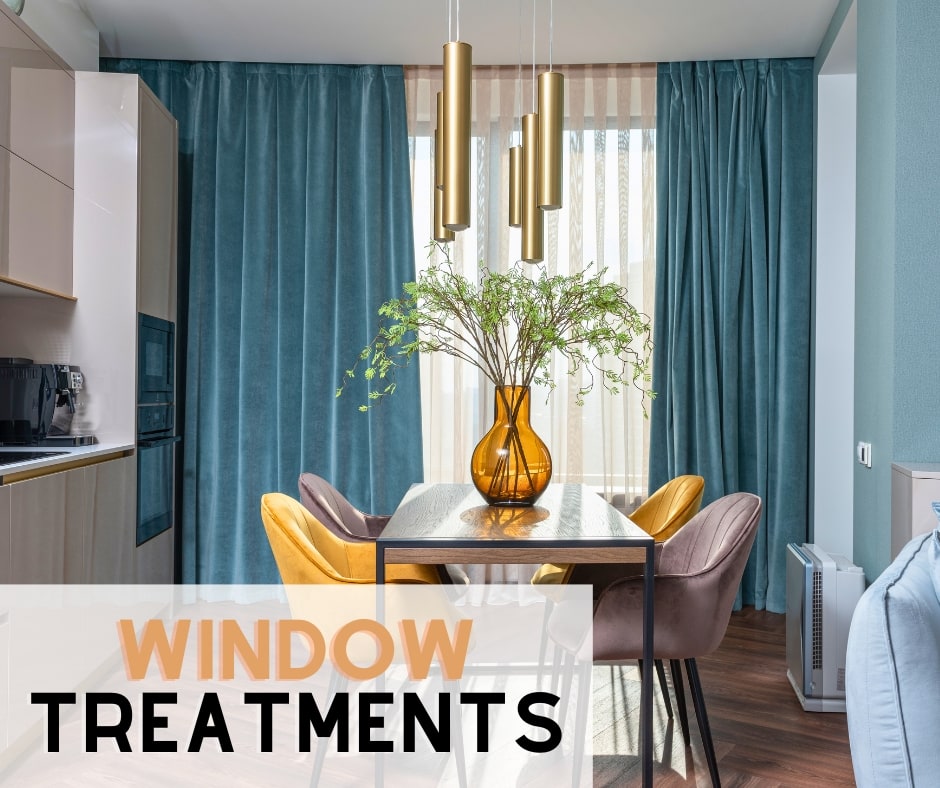
INTERIOR DESIGN MISTAKE #13 – No color scheme in the room
Not incorporating color into your decorating can leave your room feeling flat and lifeless. Using too many colors without a cohesive theme can create a chaotic and unbalanced environment.
Let’s find the sweet spot! Choose colors that not only match the room’s purpose but also resonate with your style. By weaving these colors throughout your decor, you create a look that’s pleasing to the eye.
Now, if you’re not ready to paint your walls a bold color, there are other ways to sprinkle in color. Imagine a striking sofa in a vibrant shade, stealing the show in your living room (focal point).
Or hang a large, colorful piece of art and incorporate those colors into the rest of the room. I like to use artwork and area rugs as my inspiration pieces to form a color scheme for the whole room.
But if you’re into all white and bright with tiny pops of color, there’s something for you, too. Gather a bunch of colored vases, candles, or dishes and arrange them like a bunch of confetti. Just make sure the colors are reflected somewhere else in the room so they make sense.
With just the right amount of color, your room transforms into a lively haven that’s both balanced and exciting. It’s like a piece of art that you step into, creating a space where you’ll love to hang out.
So, grab your paintbrush and your favorite hues, and let’s bring your room to life!
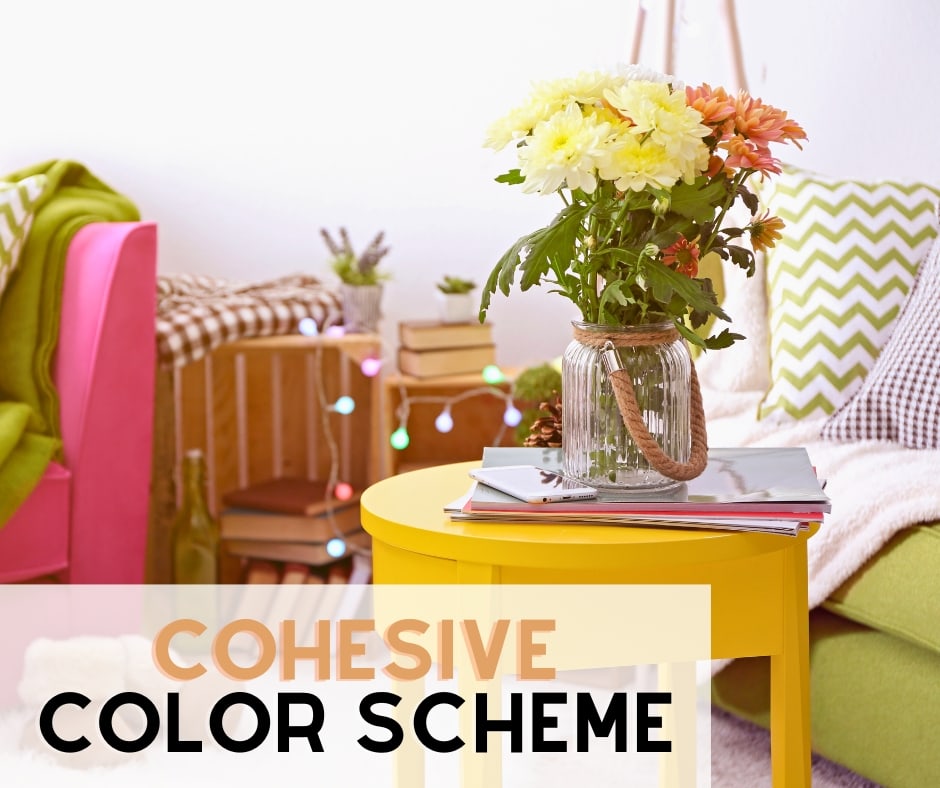

You might like this…
Don’t know what color to choose? Read my post “How to pick the right color the first time”
INTERIOR DESIGN MISTAKE #14 – Furniture is the wrong scale
Furniture that is too large or too small for a room can disrupt the overall balance.
Furniture that is the right scale for your room size will create a well-balanced and inviting environment.
Measure your space carefully and choose furniture pieces that fit the proportions of the room. How do you know what is the right scale? Barbie’s dream house.
Remember playing with Barbies as a kid, and the only items that would fit in a living room would be a sofa and maybe a console table? Or the bedroom would be just big enough for a bed and maybe a dresser? And everything else in the room was in a photo on the wall. That’s because the furniture was the wrong scale.
Everything you put into your room should be the right scale. You should be able to fit everything you need in the room without crowding it or making it feel empty.
In a large room, you will need larger-scale furniture such as big arms on the sofa or a large built-in on the wall.
In a small room, you will need smaller-scale furniture such as furniture with exposed thin legs or a free-standing open bookcase.
And if you have a small room, fewer items are better. A lot of small items will make the room look even smaller.

INTERIOR DESIGN MISTAKE #15 – Not adding plants
Not incorporating greens into your decor will leave the room feeling dead.
You don’t have to have a green thumb to use plants to liven up your room. Plants, even artificial ones, make a room come alive. They are great for filling in empty spaces, and they soften hard edges.
If you have a bare corner in your room, then add a ficus tree or an olive tree. It fills in the space and adds some life to the space.
When you’ve finished placing your accessories, and you still have some blank areas that need a little something, add some greens. They don’t even need to be in a pot or vase. Just tuck some fake branches in and around your accessories and watch them come to life.
By being aware of these most common mistakes and implementing the suggested solutions, you can create a beautiful and functional living space that you’ll be proud to call home. Take the time to plan your design, consider the room’s function and architectural details, and pay attention to lighting, furniture placement, and color schemes.

FAQ’S
CONCLUSION:
With a thoughtful approach and by avoiding these common interior design mistakes, your home will become a reflection of your unique style and personality. Happy decorating!
Related Posts…
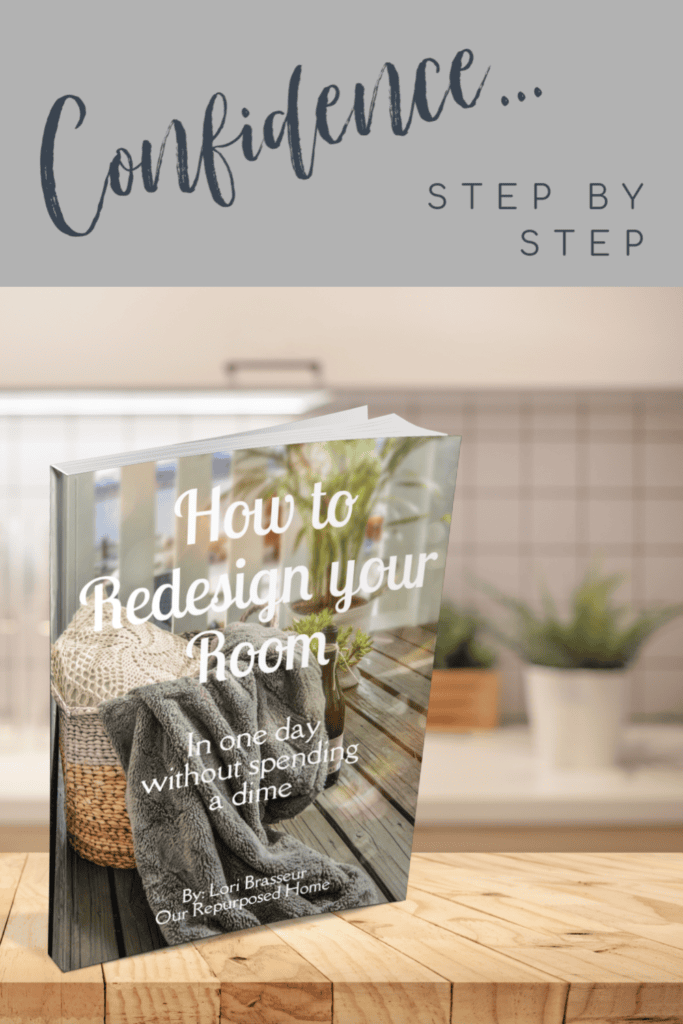
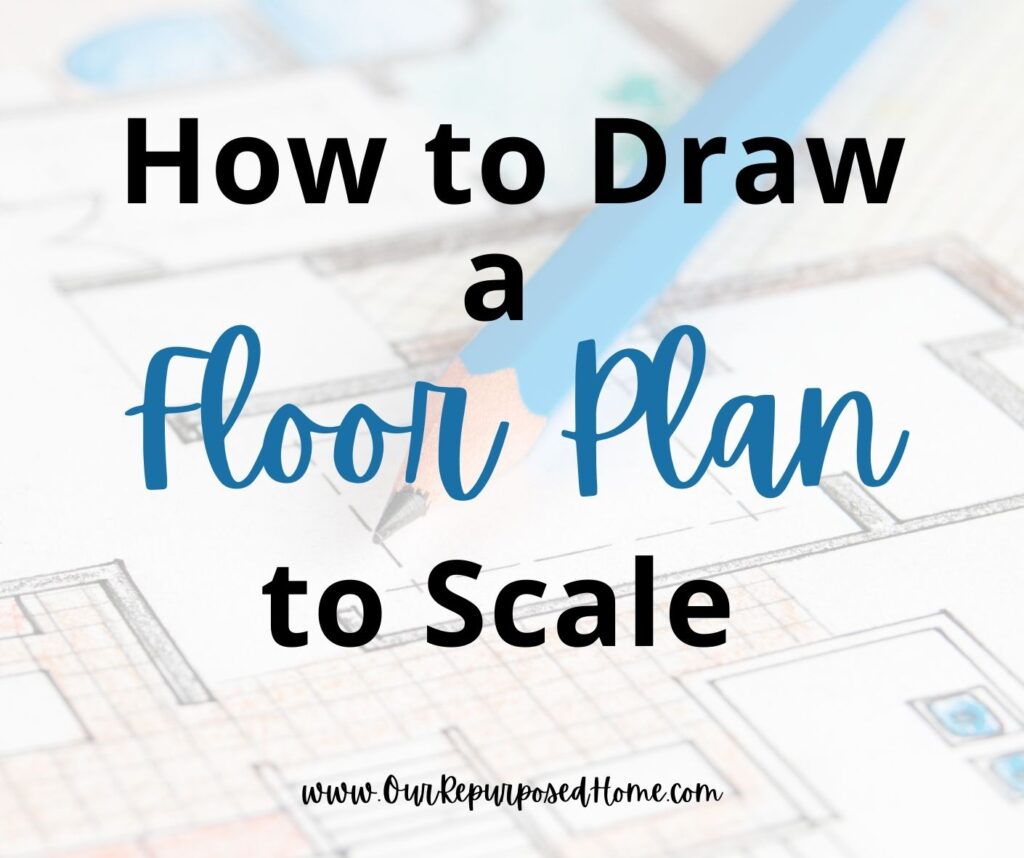


Great tips!
Thank you 😊